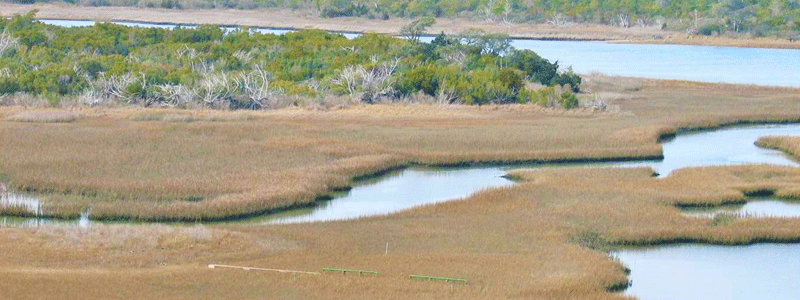Ecological assets, or eco-assets, develop from incentive-based environmental compliance programs created to protect ecosystem services and help ensure compliance with the U.S. Clean Water Act and Endangered Species Act.
Traditional environmental compliance programs support ‘human health and welfare’, a phrase established in 1970 by the federal National Environmental Policy Act.
Eco-assets, on the other hand, stem from programs that go beyond the minimum health-and-welfare standards. These programs give regulated entities options that can optimize compliance strategies, reducing compliance costs while producing complimentary benefits to local ecosystems and economies.

An example is the wetlands mitigation program begun by the U.S. Army Corps of Engineers (ACOE) in the 1980s. This program was designed to compensate, ‘mitigate’ or ‘offset’ impacts to wetland habitats to ensure no net loss of wetland ecosystem services.
The ACOE program was designed in the 1980s to prevent further losses of wetlands. The program gives developers the choice directly compensating for wetlands impacts, purchasing third-party mitigation credits, or paying ‘in-lieu fees’. Developers who were not experienced with wetlands and didn’t know how to mitigate on their own, or who found in-lieu fees to be expensive, looked to third parties to provide the necessary mitigation. This led to creation of ACOE-approved wetlands mitigation ‘banks’ – essentially wetland habitat ‘savings accounts’ – that could be drawn against to compensate for development impacts. This also created a competitive, cost-optimum market for mitigation credits.
Third party mitigation banks earn a certain number of agency-approved wetland credits that can be sold to offset unavoidable wetland impacts. These credits represent acres of protected, enhanced, restored or created (PERCed) wetland habitat in an ecologically similar area. This helps ensure no net loss of wetland ecosystem services.
Mitigation Credits represent transferrable commodities capable of satisfying compliance requirements usually related to watershed or biodiversity protection, but also including carbon sequestration (where regional compliance markets exist) and renewable fuel standards under the Energy Policy Act of 2005. All such credits in effect offset or mitigate activities that impact ecosystem services.
The sale of third party mitigation credits to developers means that mitigation providers (aka mitigation bankers) were holding fungible assets that could be exchanged in the environmental marketplace, as it came to be called.
Wetland credits emerged as the first eco-asset in the late 1980s. Thirty years later these credits, these eco-assets, are treated as bookable commodities contributing to annual profit-loss statements of many traditional business.
Many eco-assets have emerged as part of various no net loss programs aimed at protecting ecosystem services. Agencies have authorized creation of species and habitat credits to prevent loss of biodiversity resources, as well as riparian or nutrient credits to protect water quality against urban and agricultural runoff. Similar programs improve air quality, reduce waste and encourage aquifer recharge, among other important social goals. Renewable energy credits (RECs) are exchanged as part of the Regional Greenhouse Gas Initiative (RGGI) in the U.S. Northeast Region, while RIN (Renewable Identification Number) credits are exchanged nationwide in concert with renewable biofuels targets established each year by U.S. EPA.